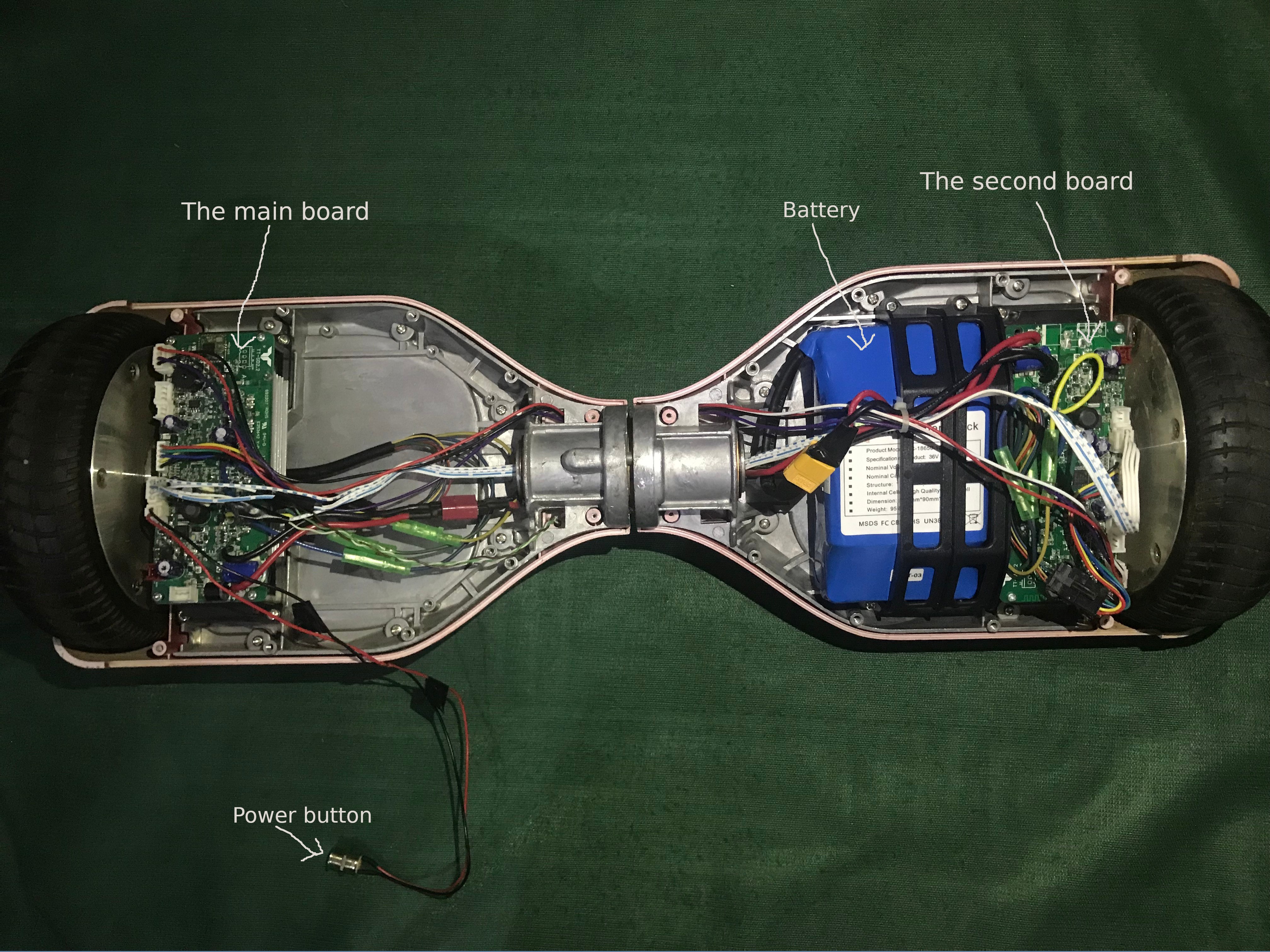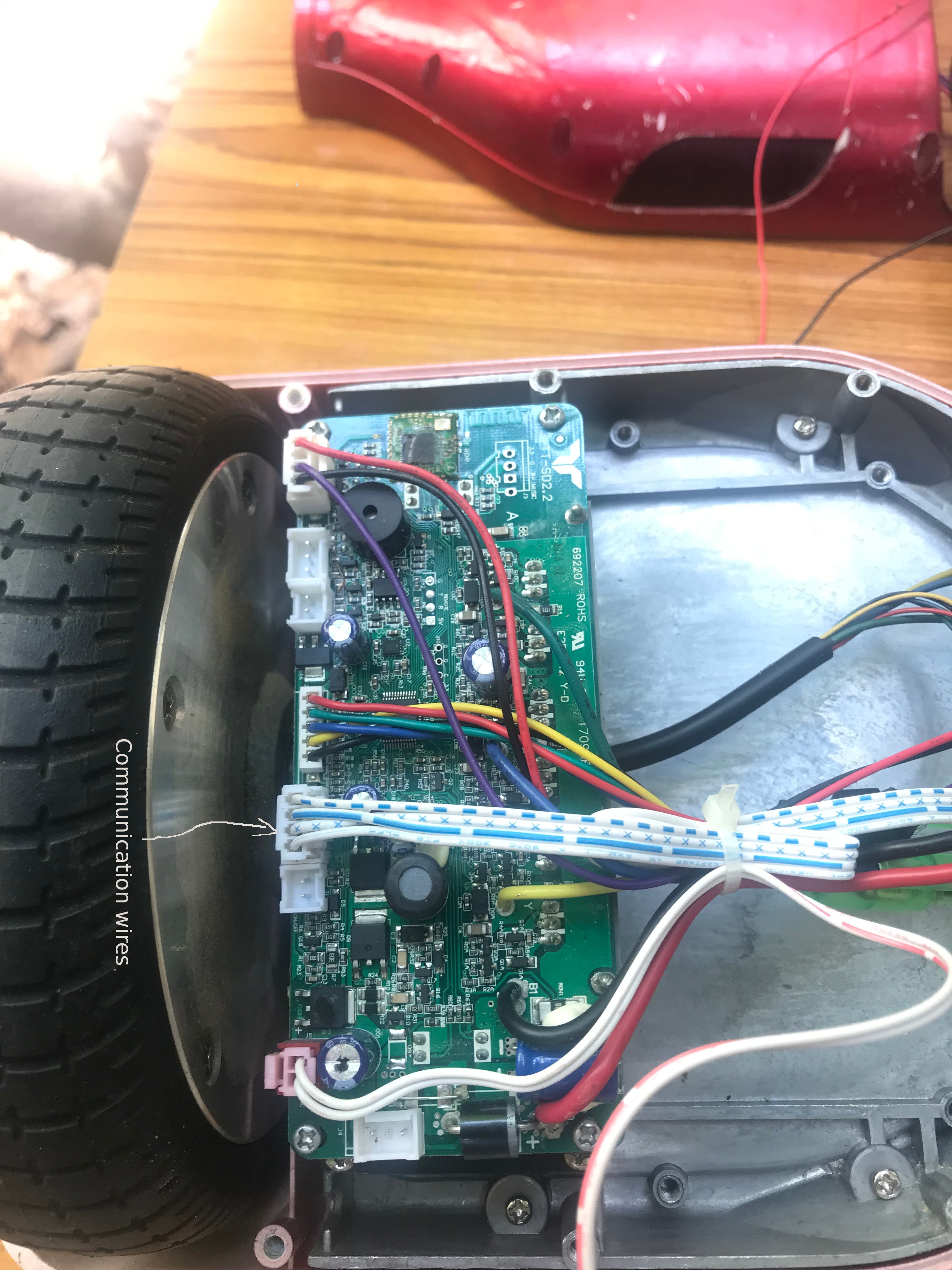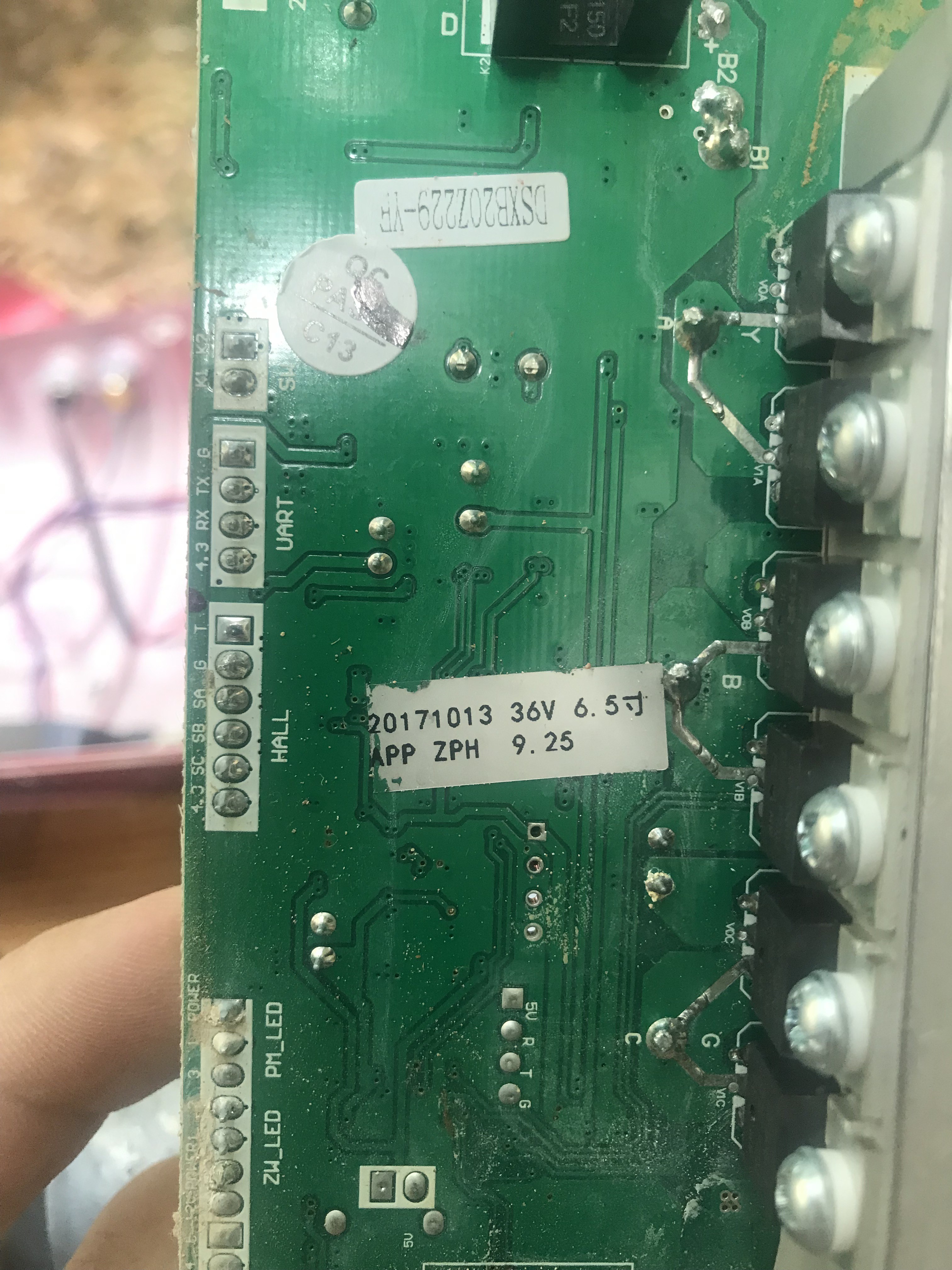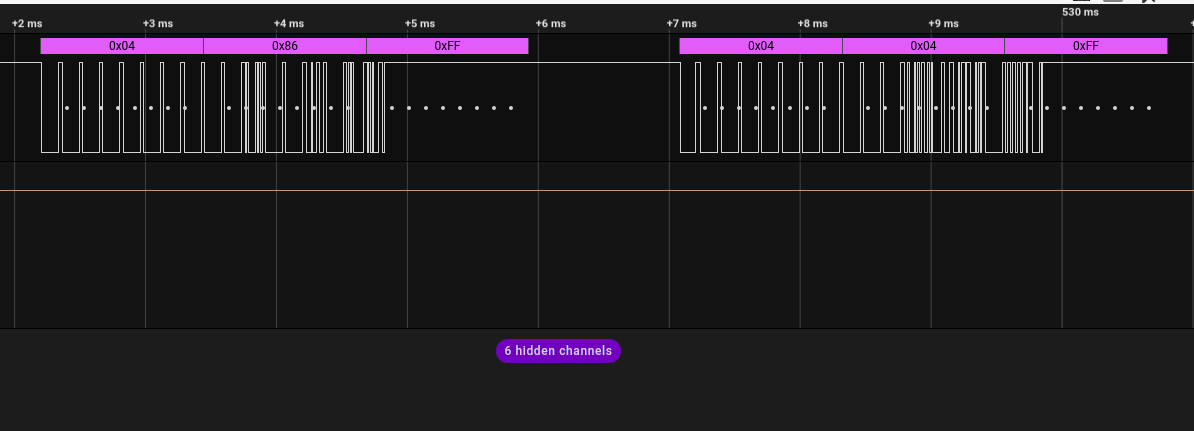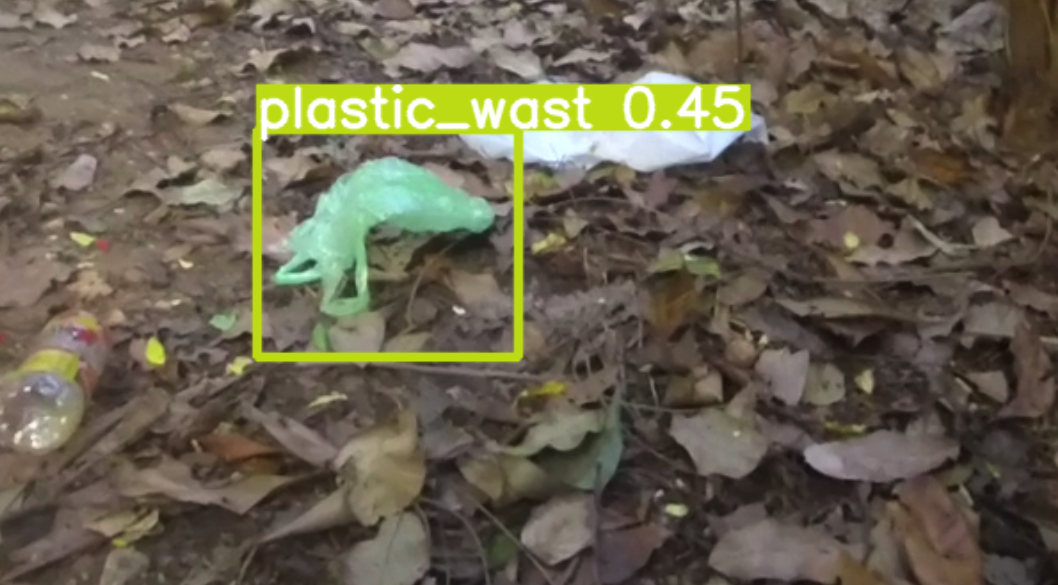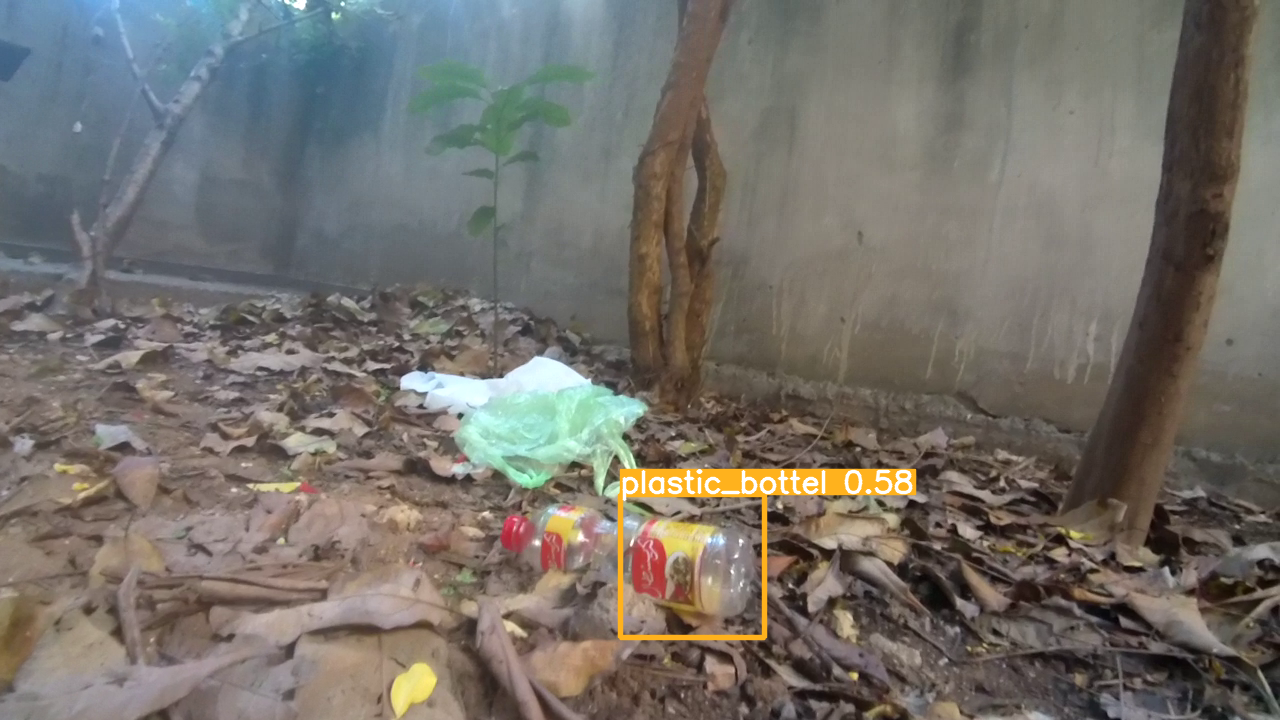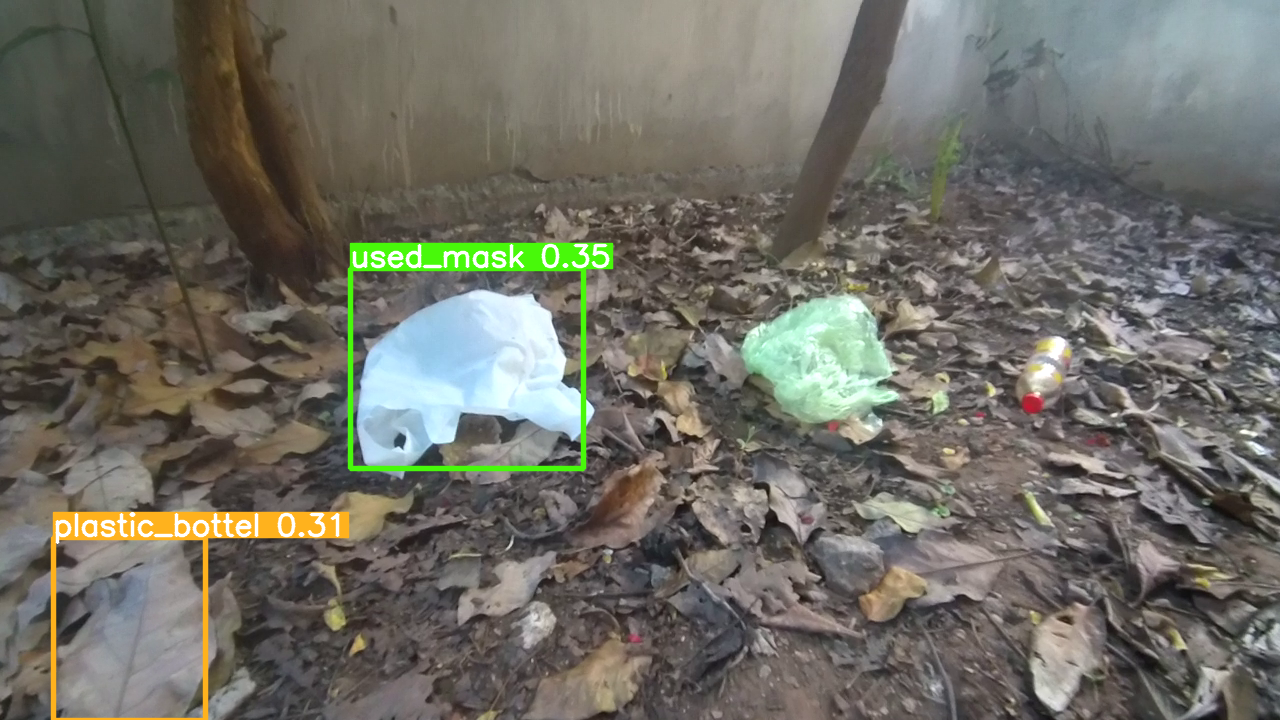-
control the hoverboard motors using the Arduino #2
08/08/2022 at 00:39 • 0 commentsMy first intention when I was thinking about this project was to be able to control the hoverboard without any major modifications of the hoverboard so anyone can rebuild this. However, I tried to analyze the packets exchanged between the two boards, but whenever I connect the Arduino to the hoverboard, it shuts down after a few seconds. I couldn't figure out why this is happening, maybe it caused by the firmware or something else.
Afterword, I did some researches, and I found that there are project that used the same hoverboard I have (hoverboard with two main boards). So I decided that I'll follow their lead even if this will require uploading a new firmware to the hoverboard, and maybe later I'll come back to continue on my first idea.
Fortunately, due to the "magic of open source", there are many projects and github repos hat give instruction on how to do this (The first project I found is Hoverboards for Assistive Devices, that uses the Hoverboard-Firmware-Hack-Gen2). At this moment I don't have an ST-Link programmer in order to program the onboard ship (GD32F-130), I ordered one and I will continue the project when I receive it.
-
control the hoverboard motors using the Arduino
07/23/2022 at 23:09 • 0 commentsIn this log, I will present the process followed to control the hoverboard using an Arduino pro mini. First step I did some research on the internet to see if there is anyone who hacked a hoverboard before, and I found a lot of resources. However, the hoverboard I have is different, all the resources I found uses a hoverboard that has tree electronic board: two small board that contain an accelerometer and a main board that takes information from the two other board and then control the motors.
The hoverboard I have has just two electronic cards, one acts as a main board.
![]()
After inspecting the electronic boards, I did found that the boards use the UART protocol to communicate between each other.
After determining the RX/TX pins, I extended them and hock them to a logic analyser to try to find the baud rate of the serial communication. unlike the resources I found in the internet, the baud rate of this hoverboard is 7752 bps. Then I tried to read the frames and find out which one is which in order to reproduce them using Arduino to control the hoverboard.
![]()
After several testes and workaround, the hoverboard starts moving after receiving frames from the Arduino. However, it was not a full control, the hoverboard keeps moving backward and stops after a while and turns off. The problem might be due to a bad frame, or that the messages sent from the Arduino overlaps with the one coming from the other electronic card.
To overcome this problem, I tried to disconnect each electronic board and control just one board at a time, but nothing happens. I also checked that the voltage provided by the Arduino signal is the same as the one in the board and found that that is not the issue.
Now, I'm still trying different methods and looking for other solution. More details could be found in the github repository.
-
Model training for of garbage in forest
07/13/2022 at 22:10 • 0 commentsThe first step in this project was to train a model to detect garbage in the forest. To gain some time, I tried to see if there is a prepared dataset for garbage detection in forest, and I found this github repo Garbage Detection using Yolov5 on Jetson Nano. This model tries to detect various types of garbage objects, which is suitable for this project. However, when cloned and tested using new images, the trained model can detect some objects correctly and give them the correct annotation. But sometimes, the model fails to detect objects or detects wrong objects.
For test purposes, I will use this model for the next build steps of the robot. And when done, I will prepare a clean dataset for garbage detection in the forest and beach.
![]()
![]()
![]()
AkerfaBot
A DIY robot that helps collect the trash in the woods. Image recognition will be uses to detect trash and collect it using a robotic arm.
 Nait Malek Youssef
Nait Malek Youssef